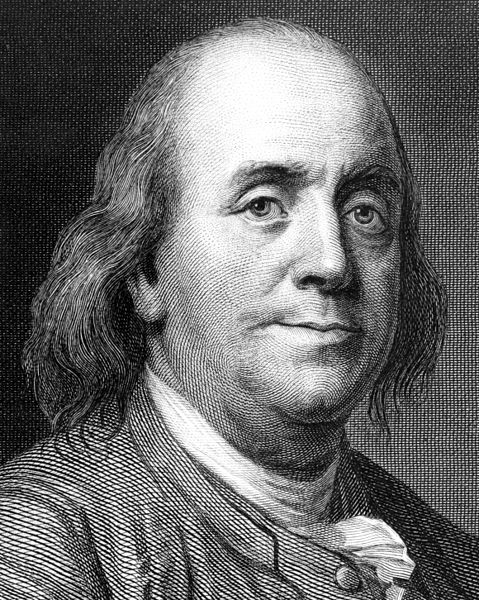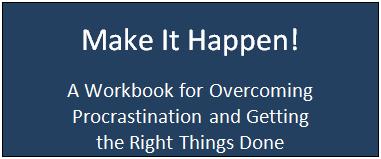 In 1772 a man named Joseph Priestley wrote a letter to Benjamin Franklin asking for his advice on a decision he was trying to make.
In 1772 a man named Joseph Priestley wrote a letter to Benjamin Franklin asking for his advice on a decision he was trying to make.
Benjamin Franklin wrote back indicating that he couldn’t tell Priestley what to do, since he didn’t have enough information about Priestley’s problem. However, he could tell Priestley how to make his decision.
Here’s the decision-making process proposed by Franklin, in his own words:
When these difficult Cases occur, they are difficult chiefly because while we have them under Consideration all the Reasons pro and con are not present to the Mind at the same time; but sometimes one Set present themselves, and at other times another, the first being out of Sight. Hence the various Purposes or Inclinations that alternately prevail, and the Uncertainty that perplexes us.
To get over this, my Way is, to divide half a Sheet of Paper by a Line into two Columns, writing over the one Pro, and over the other Con. Then during three or four Days Consideration I put down under the different Heads short Hints of the different Motives that at different Times occur to me for or against the Measure. When I have thus got them all together in one View, I endeavour to estimate their respective Weights; and where I find two, one on each side, that seem equal, I strike them both out: If I find a Reason pro equal to some two Reasons con, I strike out the three. If I judge some two Reasons con equal to some three Reasons pro, I strike out the five; and thus proceeding I find at length where the Ballance lies; and if after a Day or two of farther Consideration nothing new that is of Importance occurs on either side, I come to a Determination accordingly.
And tho’ the Weight of Reasons cannot be taken with the Precision of Algebraic Quantities, yet when each is thus considered separately and comparatively, and the whole lies before me, I think I can judge better, and am less likely to take a rash Step; and in fact I have found great Advantage from this kind of Equation, in what may be called Moral or Prudential Algebra.
Does the decision-making process recommended by Franklin sound familiar? It should, since it’s basically the pros and cons list. Franklin’s letter to Priestley appears to have been the birth of this decision-making method. The process described by Franklin goes as follows:
1. Take a sheet of paper and create two columns by folding the sheet in half. Title one of the columns “pro”, and other column “con”. Basically, you’re creating a visual tool to add clarity to your thinking.
2. Take a few days to think about the reasons for and against taking the measure that you’re considering. As each reason occurs to you, write it down on the sheet of paper in the appropriate column. By taking a few days to think about the decision that you’re trying to make, you force your brain to come up with all of the positive and negative aspects of taking the measure you’re considering.
3. Once you have your completed pros and cons list in front of you, assign weights to each item on your list depending on its importance.
4. When the weight of a item on your “pro” list is equal to the weight of an item on your “con” list, strike both of them out.
5. What is left in the balance is the choice you need to make. Wait a few more days and, if nothing new occurs to you, act on the decision you’ve made.
Conclusion
And there you have it: moral algebra.
Learning how to make good decisions is vital to living your best life. Therefore, my next post will also cover the topic of how to make good decisions. In fact, one of the methods that I’m going to propose to you comes from Chip and Dan Heath, two brothers who argue that Franklin’s decision-making method is flawed due to biases in our thinking.
Stay tuned for more on how to make better decisions.


Related Posts:
1. Four Unusual Ways to Reduce Stress
2. Get What You Want By Cultivating a Really Useful Attitude
3. Three Superb Exercises for Boosting Your Self Esteem
4. How to Write a Personal Manifesto
5. 50 Characteristics of An Educated Person
Did you enjoy this article? Subscribe to “Daring to Live Fully” by RSS or by email, and get free updates.






 Marelisa Fabrega is a lawyer and entrepreneur. She holds a Bachelor of Science in Business Administration from Georgetown University in Washington, D.C., as well as a Juris Doctor from the Georgetown University Law Center. You can learn more about her
Marelisa Fabrega is a lawyer and entrepreneur. She holds a Bachelor of Science in Business Administration from Georgetown University in Washington, D.C., as well as a Juris Doctor from the Georgetown University Law Center. You can learn more about her 






Comments on this entry are closed.
Thanks for sharing this wisdom from one of my favorite statesmen. Just the idea of giving it a little time to process will save a lot of mistakes. Your posts are the best ever!
Thanks Bill. Every time I read something about Benjamin Franklin I admire him a little more.
Another neat trick I’ve found is to flip a coin. Not that you’ll actually go with the way it comes out, but that initial emotion you have when you see which way it has landed (relieved, disappointed, excited, etc.) is a great “gut check” as to what you really want deep down.